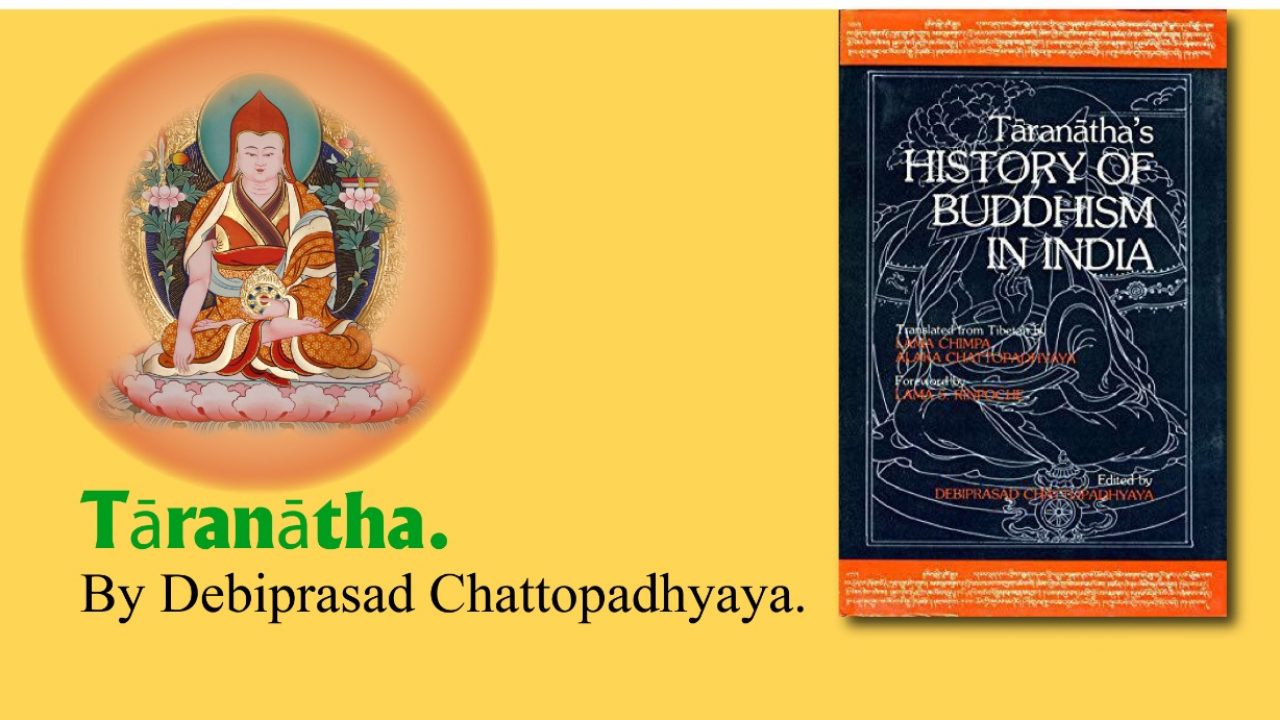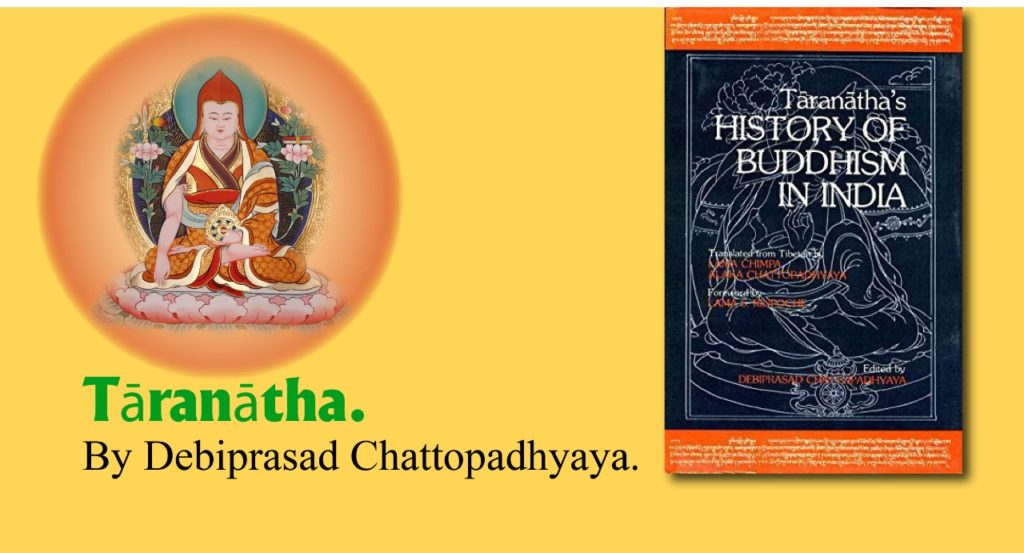by Tāranātha
Part 3
Activity in India
Next, the Master thought to himself, “I must now work as much as I can for the benefit of sentient beings.” Thus, he went to the Tharu kingdoms, such as the in country of Tirāhut, and to the countries to the north, such as Kāmarūpa and Nepal. Over a few years, for all those fortunate enough, the Master used various means—such as teaching the Dharma and instructing in alchemy and elixirs—to help many thousands of people. He extended their lives, increased their wealth, found water where there was none, and forced it underground where there was too much. Even nowadays there are many places to be found, such as in Tharu, Champa and Khasya, where the Master created springs or underground water passages. In the land of Campāraṇa, there is the great river Bhati that he made go underground for about one day’s travel, and another that travels underground for just a short time.
In those days, in the south of India, in Trimala, near Triliṅga, in a sandalwood forest near to the sacred spot of Lakṣmaṇa, at Śivasthān, there stood a naturally arisen śivaliṅgaṃ of about one cubit in height. Each day, many animals were killed there to make a blood sacrifice. Heretics recited maledictory mantras, whose mere utterance brought down pestilence and plague upon the local Buddhist community. Trimala was a thriving country, home to a large number of Buddhists, and these were the people who made most of the offerings to Odantapurī. Therefore these practices of blood sacrifice and sorcery at the naturally-arisen śivaliṅga were causing considerable harm. Meanwhile, in the land of Baṅgala in the east, a small lake had sprung up southwest of Nālandā, close to a place called Bāgala. This lake was the home of a malicious nāga loyal to the heretics. Simply by offering an oblation to the lake, they obtained limitless amounts of gold, silver, pearls and jewels, and with these they were establishing new heretical schools across the five eastern regions. Needless to say, the nāga’s powerful magic was also detrimental to the Buddhist community. Further away, at Rājagṛha in Magadha, a big crystal boulder had become the gathering place for local brahmin spirits and heretical deities whose powers of clairvoyance, clairaudience and divination were gained without difficult practice.
These works of evil had not long started once the Master decided to put an end to them. He built a meditation hut at the glorious Vajra Seat in Bodhgayā. There he opened six great maṇḍalas of the sovereign vidyā-deities. Continuously reciting the vidyā-mantras of the Glorious Herukas, he brought forth the twenty-one signs of accomplishment—such as blazing fires and resounding laughter. The three kīla-daggers of stability appeared, and the Master himself took up the kīla-dagger of wrathful Trailokavijaya and moved instantly, through his magical powers, to Trimala in the south. He plunged the kīla-dagger into a tree near the liṅgaṃ. Instantly the surrounding forest caught fire and was burned to the ground, together with most of the liṅgaṃ. From then on, no further harm came to the Buddhists of the region, and their offerings to Odantapurī were able to resume as before.

